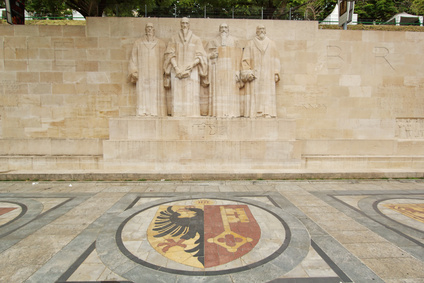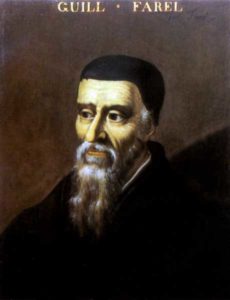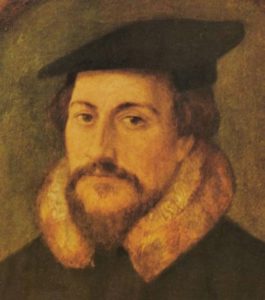How does John Calvin Fit into the Reformation?

John Calvin’s Rise and Impact
Nineteen years after Martin Luther nailed the 95 Theses to the door of a Catholic church in Germany, John Calvin was asked to become a leader of the Protestant movement in Geneva, Switzerland. Dr. Erwin Lutzer writes in his book, Rescuing the Gospel, “Calvin had gone to Geneva to escape the persecution of Protestants in France, and when he arrived, he was surprised that the people there had heard of him.” (Lutzer 162). He was known for a textbook he wrote at the age of 27, called Institutes of the Christian Religion, a book on Reformed theology still read today. Calvin was hesitant to lead the Protestant movement because of this youth and inexperience. Yet, after some persuasion from prominent leader Guillaume Farel, he became a “second generation” reformer. Both men’s images are carved into the Reformation wall in Geneva, pictured above.
Calvin’s testimony was likely influenced by the spread of the Gospel spurred on by Martin Luther and his initial stand against the Catholic Church. “He (Calvin) says that God turned his course in a different direction by the hidden bridle of His providence. ‘My mind…, despite my youth, had been hardened… By a sudden conversion God turned and brought it to docility.’ God, he said, tamed his mind and overcame his darkness, resulting in his conversion.” (Lutzer 164).
John Calvin’s belief in predestination is the doctrine that he is most well-known for today. Dr. Lutzer writes,”Calvin believed that the fall of humanity into sin was so pervasive and affected people’s minds and wills so much that they couldn’t believe the truths of the gospel unless God were to perform a miracle of regeneration in their hearts. Because God’s purposes can never be thwarted, it was exactly such a miracle that God performed in the hearts of His elect.” (Lutzer 164).
To experience the sites in Germany and Switzerland related to the Reformation, see our current Reformation tours.



